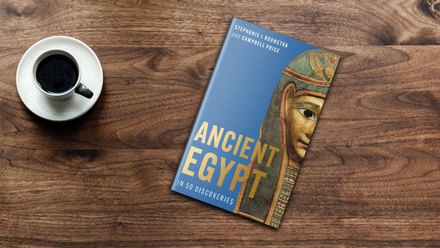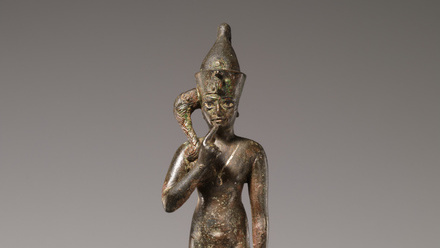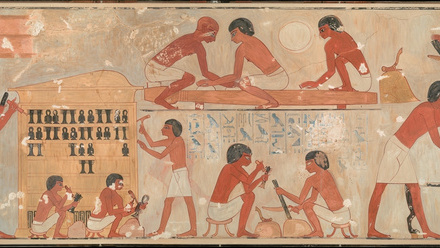Pottery Analysis and Embalming Secrets
Pottery styles, like mobile phones, constantly go in and out of fashion. Hence, they are a reliable source of dating, especially where ancient Egyptian texts are sparse. Furthermore, features of each pot can be used to explain its use and the activities taking place in the area of discovery. The pottery associated with the recent discoveries made by the Qubbet el-Hawa Research Project played a prominent role in their dating and interpretation. Areas where feasts were carried out, at the foot of the Qubbet el-Hawa hill, were dominated by sherds from broken bread moulds, which together with beer represent a common offering. Further up hill, where tombs are cut out in the rock, the pottery assemblage is dominated by sherds from storage jars placed inside the tombs to carry grave goods.
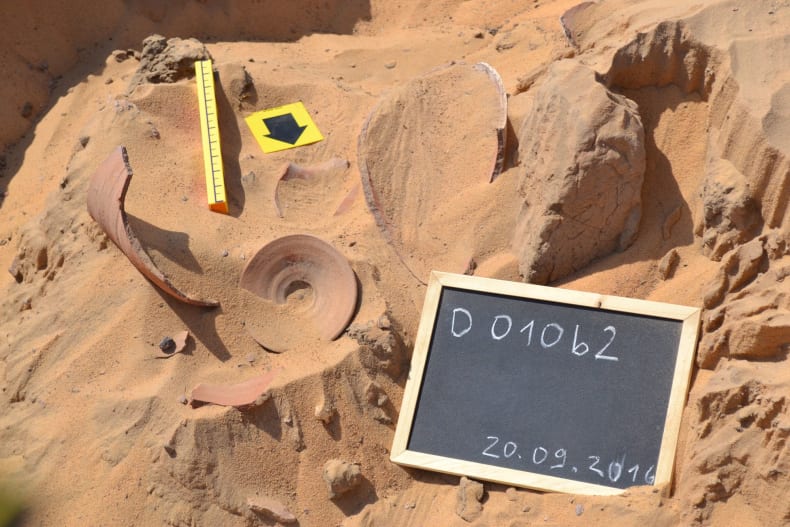
The pottery cache discovered in 2016 in-situ
The very last day of excavations in 2016 brought a nice surprise in the form of a cache of large pots with lids, found next to the long-sought causeway of Sarenput I. Similar pots were used in Embalmer’s cache during the ancient Egyptian Late Period (c. 672-332 B.C.). Hence, these pots were used to both date and identify the use of landscape within this part of the cemetery. More interestingly, these pots show stains, possibly from their contents. Residue-analysis will be carried out as part of this project to try to identify the chemicals used in the embalmer’s tent of Qubbet el-Hawa.
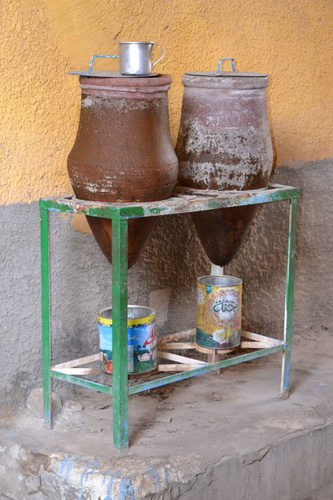
Residue-analysis is a type chemical analysis often mentioned in episodes of CSI. It benefits from the premise that each plant or animal product has specific quantities of organic compounds that can get trapped in the pores of any fabric, such as pottery and textiles. This analysis is also useful in reconstructing ancient Egyptian diet, as indicated by the fatty acids trapped in the pores of pottery containers. The reliance on fatty acids, unfortunately, means that pots used as containers of water (similar to the ones in use in modern Egypt and known as zirs, seen on the left) cannot be identified using this analysis.
This project also aims to make comparisons between pottery discovered at Qubbet el-Hawa and those found within the broader Aswan area. It is important to differentiate pots used in the cemetery (Qubbet el-Hawa) from those used within the household or as part of temple rituals.
Further reading
Khalifa, E. 2016. Pottery: Preliminary Report, in Bommas, M. 2016. ‘Qubbet el-Hawa, 2016’, Journal of Egyptian Archaeology 102:38-40.
Khalifa, E. 2014. ‘Crossing Boundaries in Ceramic Studies: Applying Chemical Residue-Analysis to Predyanstic Sherds from Hierakonpolis.’, in K. Accetta et al. (eds), Current Research in Egyptology XIV: Proceedings of the Fourteenth Annual Symposium, 94-104, Oxford.
Khalifa, E. 2012. ‘Residue Analysis at HK11C Mound A’, Nekhen News 24:12.
Schiestl, R. & Seiler, A. 2012. Handbook of Pottery of the Egyptian Middle Kingdom. Vienna.

